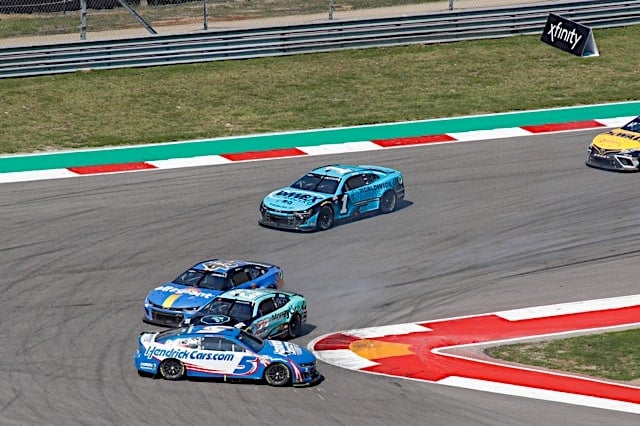What’s the solution?
“The solution, I think, starts with repercussions,” Kyle Busch said this past weekend at Circuit of the Americas when asked about overaggressive racing.
Racing etiquette has been one of the names of the game in NASCAR for the past couple of years. With the emergence of the youth movement has also come an apparent new approach to racing.
In today’s racing, aggression has increased in different ways, impatience seems to have grown, and survival has become the nature of multiple races. That racecraft has soured many veterans and even some of the more polished, younger drivers.
But in order to emerge victorious, sometimes that means playing with the ball you have been given, even though it is not in some driver’s code. To be successful, you cannot roll over.
“I race everyone the way they race me,” Daniel Suarez said at Atlanta Motor Speedway. “Some drivers, they show more respect than others, and some drivers are smarter than others. I’m the kind of guy that’s going to race the way I get raced.”
Racing etiquette has become an emerging storyline of 2023, but those talks started a while ago. While the topic has risen at most track types, road courses have become the prime example over the past year.
COTA, Watkins Glen International, the Indianapolis Motor Speedway road course and the Charlotte Motor Speedway ROVAL have seen some questionable racing recently, with a lot of that action occurring in turn 1 at each track. Fairly respectable racing for 80%-90% of the races has turned into a complete circus in late-race scenarios.
Overtime restarts have led to drivers using each other as braking points, going six-wide in a tight turn, or causing pile-up wrecks. The typical response is usually anticipated: hot tempers and hurt feelings.
Flash back to 15 years ago. I was just seven years old, and while I have watched NASCAR as far back as I can remember, it was the 2007-2009 period that made me fall in love with the sport.
Road course racing was scarce in the NASCAR Cup Series at that time, with the routine stops at Sonoma Raceway and at the Glen being the only events in the series.
It was a fun time to watch road course racing, with ringers being brought in like Boris Said and Ron Fellows to full-time drivers such as Juan Pablo Montoya and Marcos Ambrose. Then you had the series regulars who had a knack for road…
Click Here to Read the Full Original Article at …

